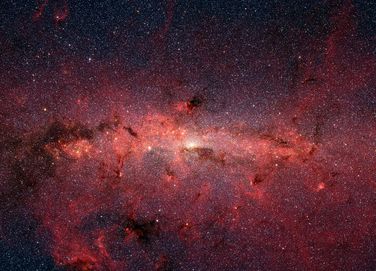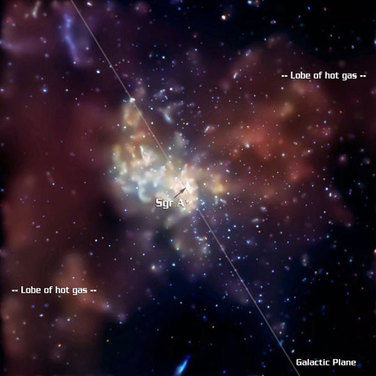You can think of our galaxy—and all spiral galaxies—as having three parts: a central bulge, a thin disk, and a halo. Together they're surrounded by a galactic corona.
The central bulge of the Milky Way is about 30,000 light-years in diameter and contains mainly old stars and interstellar gas. Deep in its core, the stars crowd together—colliding and merging—and feed the growth of an immense black hole.
The disk spans 100,000 light-years and is a region of star formation. In the disk are young stars, open star-clusters, and nebulae.
The halo is a sphere surrounding the disk, 130,000 light-years in diameter. It is home to old stars, globular clusters, and sprinkles of interstellar dust.
The halo is itself believed to be enclosed in an enormous outer layer called the galactic corona. Astronomers can't see most of its contents so they don't quite know what it's made of, but they can observe its gravitational effects. The corona spans 600,000 light-years and likely contains most of the mass of our galaxy.

